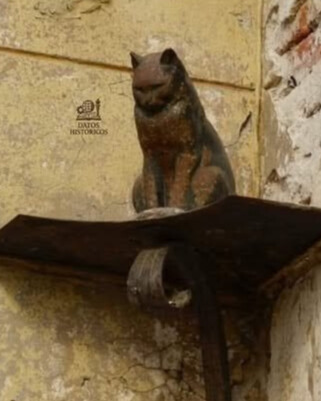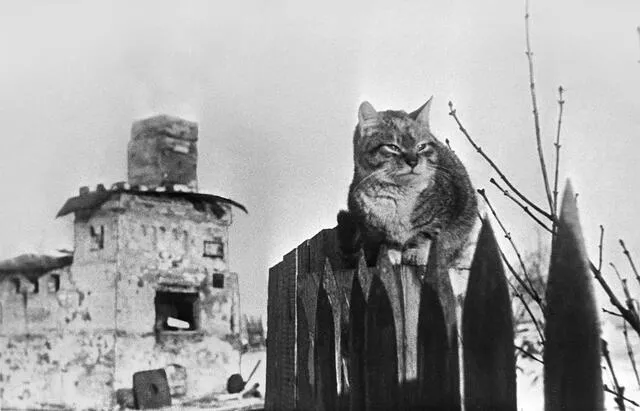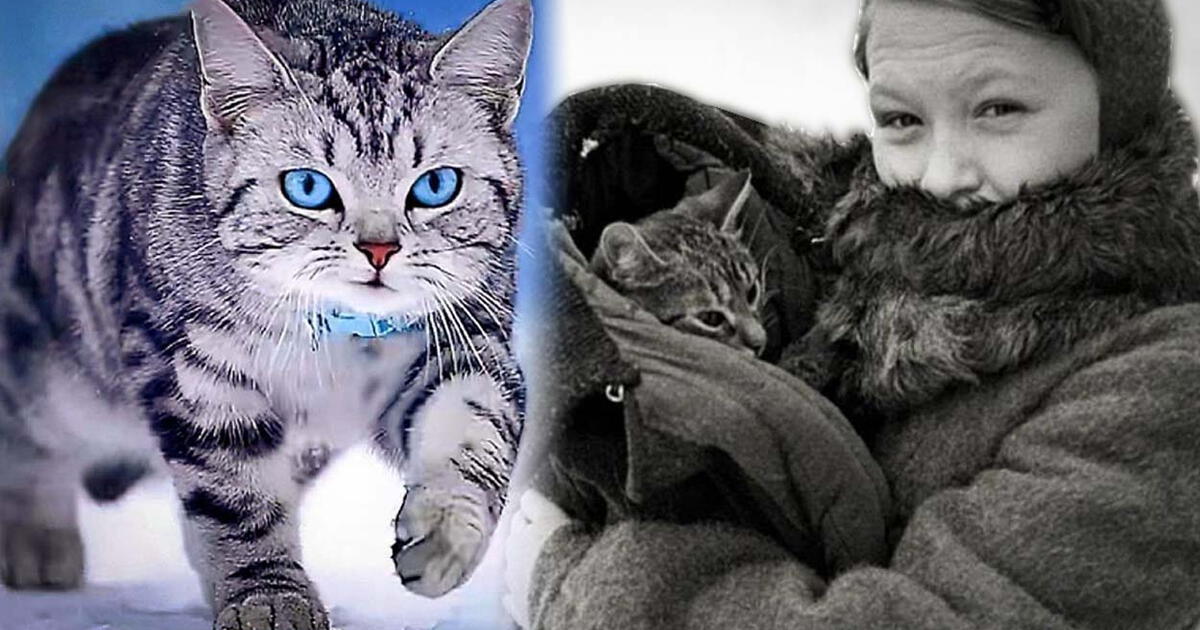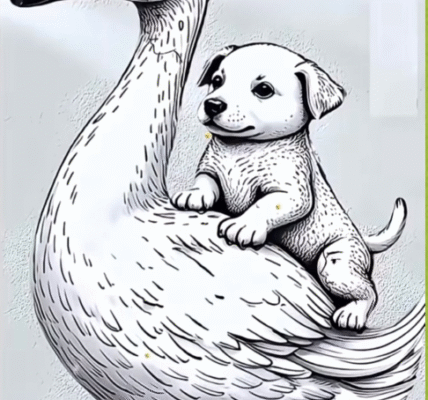The winter of 1941 in Leningrad was unlike anything most people can imagine today. The German army had surrounded the city in September, cutting off all roads, railways, and supply lines. It was the beginning of the infamous Siege of Leningrad — a blockade that would last nearly 900 days and claim more than a million civilian lives.
The cold was brutal, the hunger constant, and death was never far away. Entire apartment blocks fell silent as families wasted away in their beds. Bread rations were cut to 125 grams a day — and even that was mostly sawdust and barley husks. People boiled wallpaper paste for soup. They scavenged leather belts, book bindings, and anything vaguely edible. The smell of woodsmoke and starvation hung over the frozen streets.
And in one of those dark, half-frozen apartments lived a woman, her young daughter, and their cat — a sturdy, striped tom named Vaska.
Vaska had been just an ordinary house cat before the siege, content to chase sunbeams and curl up by the stove. But the siege changed everything. Food was disappearing, and each day the woman watched her daughter’s cheeks grow hollower, her voice weaker.
It was then that Vaska began disappearing through the cracked front door early in the morning, vanishing into the frozen, bomb-scarred city. Hours later, he would return with something clamped in his jaws — a half-starved pigeon, a city rat, sometimes even a frozen fish scavenged from the banks of the Neva River.
They boiled everything he brought, making thin stews that, though meager, kept them alive. In those days, a single mouse could mean another night survived. And Vaska never failed them.
The Day He Saved Their Lives
One morning in January 1942, when the air was sharp enough to slice through skin, Vaska began pacing the apartment with unusual agitation. His tail twitched, his ears swiveled constantly toward the outside, and his meows were urgent, almost desperate.
He darted to the door, back to the woman, then to the door again, as if insisting she follow. She didn’t understand at first, but something in his eyes — wide, bright, unblinking — made her trust him.
Grabbing her daughter and wrapping her in their one thick blanket, she followed Vaska out into the bitter morning air. The cat bounded ahead, his paws soundless on the snow, leading them to a nearby bomb shelter.
They had barely descended the steps when the sirens began to wail. Moments later, the sky roared. German shells slammed into their street, and one shell landed squarely on their building. When they emerged hours later, there was nothing left but smoking rubble.
The woman knew — without Vaska, she and her daughter would have died that day.
Life Under the Siege
The months crawled by. Winter turned to spring, but the blockade held. Hunger remained their constant enemy. The woman sometimes collected breadcrumbs from empty streets and fed them to pigeons, luring the birds close enough for Vaska to strike. She shared whatever he caught with him — because she knew he needed strength to keep hunting for them.
Neighbors began to notice. People whispered that Vaska was no ordinary cat. In a city where even humans could barely find food, he seemed able to bring something home again and again. To his family, he was no longer just a pet — he was a lifeline.
The End of the Siege
When the blockade finally broke in January 1944, the city staggered back toward life. Bread rations increased, trains brought in supplies, and for the first time in nearly 900 days, the streets were filled with the smell of fresh food.
Vaska was no longer needed as a hunter, but he remained the heart of the household. The woman often gave him the choicest morsels from their meals — a small thank-you for the lives he had saved. She would stroke his fur and whisper, “You are our guardian.”
A Family Until the End
Vaska lived until 1949. When he died, the woman and her now-grown daughter buried him in a small wooden coffin under a simple wooden cross, carved with his full name: Vasily Bugrov.
Years later, the woman was laid to rest beside him, and then, in time, the daughter. Today, the three of them lie under the same earth, as they once lay under the same blanket in the winters of the siege — bound forever by loyalty, love, and survival.
And somewhere, in the long memory of the city, Vaska’s story still lingers — the story of a small, striped cat who became a hero.








